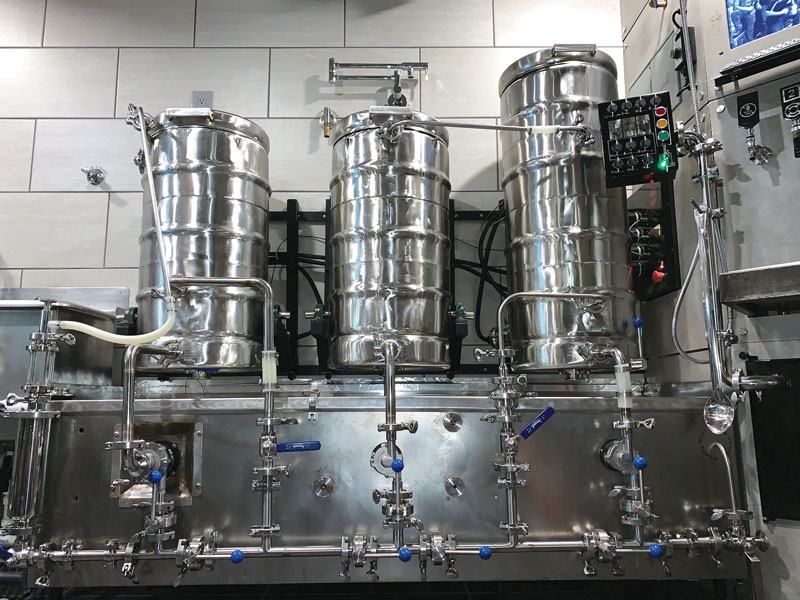Bottling Temperature
TroubleShooting
David Weber asks,
I have recently made a steam ale that I fermented in the primary at 55° F with a dry ale yeast. When fermentation was complete, I racked to a secondary and dropped the temperature to 38° F in my refrigerator. I would like to bottle this batch, and I have a few questions.
- Obviously I have to take the carboy out of the fridge and allow it to warm to room temperature. Will this affect my yeast and cause fermentation to begin with any yeast cells that are still alive?
- Do I need to add any yeast to this batch as I bottle it?
- Once bottled, do I mature it in the bottle at room temperature, or do I need to keep it as cold as I fermented it to ensure quality?
If this beer was properly fermented, it should have been completely fermented before you chilled it. The most reliable method to know whether a fermentation is done is to compare the specific gravity of your batch to that of a forced fermentation on the same wort. A forced fermentation is basically performed by taking a sample of your wort, overpitching it with yeast, and fermenting it warm. This method gives a good indication of how low the fermentation will go. But this is kind of a pain!
Instead, I usually watch the fermentation bubble, taste it for dryness, and measure the specific gravity over a couple of days. If all seems normal, I cool the batch two days after I’ve decided fermentation is complete. This all relates to your first question. If a fermentation is complete before chilling, it will not re-ignite when warmed. If a fermentation is incomplete and it is chilled, it will stop fermenting. Ales typically quit fermenting around 55° F, and lagers usually poop out around 38° F. If that same batch is now warmed up and it contains living yeast, which it probably does, it will begin to re-ferment. This is not the idea!
When homebrew is primed with priming sugar or wort, the assumption is that all of the carbonation will arise from the primings added, not a combination of primings and a mystery amount of residual fermentables from the “fermented” beer. Although almost all of us are willing to make this assumption, it is prone to failure.
Commercial breweries that consistently bottle condition their beers rely very heavily on forced fermentations, because priming beer with a mystery load of residual fermentables can give rise to explosive results! It is hard to say whether you will need to add yeast to your beer on bottling day. If the beer had a nice strong fermentation and it hasn’t been held at 38° F for more than a few weeks, you probably will be okay without an additional yeast charge. However, if the wort was initially underpitched and fermented weakly, or if you used a very flocculent strain, an additional boost may be needed.
Usually if a sample of the beer looks a little cloudy and you intentionally carry a little yeast from the bottom of the fermenter into the bottling bucket during racking, the beer will carbonate. As for warming the beer, rack it cold, adding the priming sugar, bottling it, and then letting it come to room temperature in the bottle. This method will make your racking from the secondary into the bottling bucket cleaner. Once it’s bottled, hold the beer at about 70° F for one to two weeks to ensure complete fermentation of the priming sugars. Then cool it to refrigeration temperatures for storage.
Some would argue for a cooler conditioning temperature, but there is very little flavor formation during the bottle fermentation. Also, if the yeast is sluggish, you may not get complete carbonation with a 55° F bottle fermentation.

